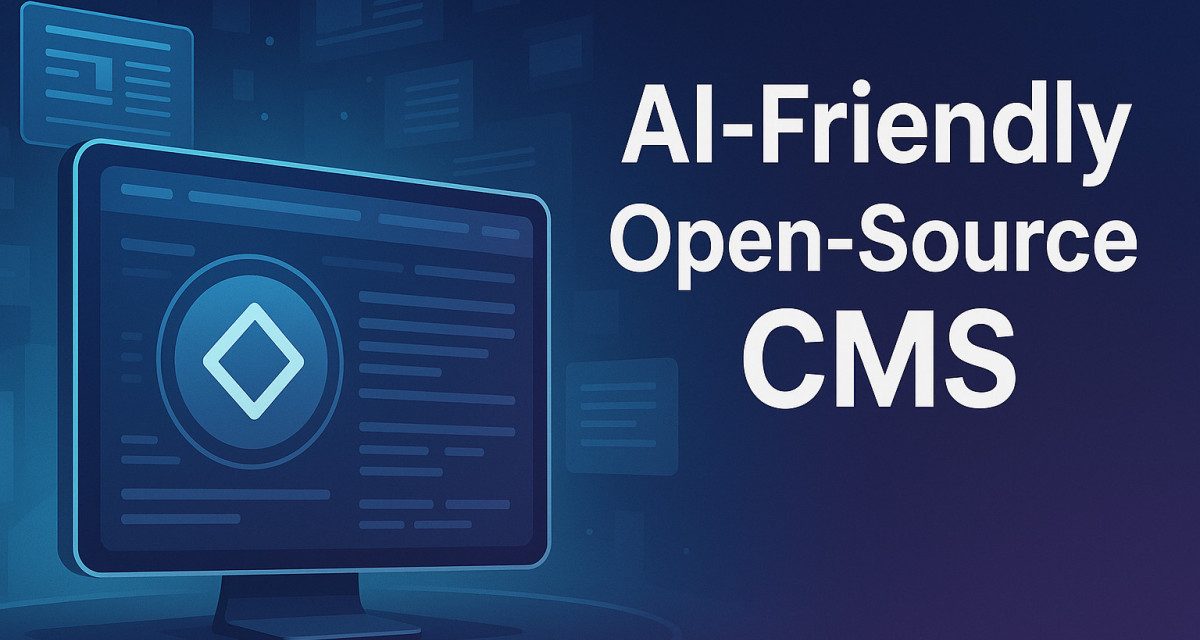Which Self-Hosted CMS Makes AI Integration Easiest?
If you’re building modern content workflows—whether that’s automated SEO generation, smart summarization, or a chatbot trained on your entire knowledge base—you need a content management system that’s both truly open-source and simple to extend with language-model magic. Below is a deep dive into six popular headless/traditional platforms and how well they mesh with OpenAI, Anthropic, local LLMs like Ollama, and orchestration tools such as n8n and LangChain/Pydantic AI.
At-a-Glance Comparison
| CMS | License + Cost |
Self-Hosting Footprint | Built-In / Official AI Hooks | Ease of Wiring (OpenAI • Anthropic • Ollama • n8n/LangChain) |
Strengths | Potential Drawbacks |
|---|---|---|---|---|---|---|
| Payload | MIT (100% free) | Node 18+, Docker or bare-metal; Postgres/Mongo/MySQL | payload-ai plugin (completions, embeddings, images, moderation) |
Code-first TypeScript—drop SDK calls inside hooks; REST + GraphQL auto-exposed for n8n/LangChain; Ollama via simple HTTP fetch | Single-language stack; versioning & drafts out of the box; no vendor lock-in | Requires comfort with code editors; no visual schema builder for non-devs |
| Strapi | MIT core (paid Enterprise add-ons optional) | Node 18; SQLite/MySQL/Postgres; one-command Docker | First-party OpenAI plugin; large marketplace of AI extensions | Plugin API lets you proxy any LLM; generated REST/GraphQL consumed instantly by n8n & LangChain | Polished admin UI; biggest OSS community; RBAC, i18n, media library | Some advanced roles/workflows gated behind paid EE |
| Directus | Business-Source License (free for orgs < $5 M/yr) | Single Node container layered over existing SQL DB | Official “AI Extension Pack” (Flows for OpenAI, DALL-E, Stability, etc.) | Drag-and-drop Flows hit any HTTP endpoint—point to Ollama or Anthropic with zero code; bi-directional webhooks for n8n | Instant REST/GraphQL for any schema; low-code automation | License isn’t pure FOSS; GraphQL is optional add-on, not core |
| Webiny | MIT core; commercial SaaS extras | Serverless (AWS Lambda); can run on K8s—heavier for homelabs | Official tutorial: “Smart SEO” with OpenAI; model-agnostic hooks | Write a serverless resolver that calls an LLM, publish via GraphQL; good fit for n8n via Webiny’s webhooks | Multi-tenant, GraphQL-first, built-in file manager | Serverless tooling adds complexity outside AWS; cold-start latency |
| Craft CMS | Proprietary source-available; paid license (from $199/site) | PHP-FPM container or any LAMP stack | Paid AI plugins (ChatGPT, alt-text, translations) | Needs custom micro-service or plugin to bridge to LangChain/Ollama; exposes webhooks/queue for n8n | Best-in-class content authoring UI, matrix field flexibility | Not fully OSS; plugin ecosystem can get pricey; PHP stack separate from most AI tooling |
| CrafterCMS | GPL-v3 Community / paid Enterprise | Java (Spring Boot) with Docker-Compose demo stack | Official ChatGPT plugin; AI author-assist in the WYSIWYG | Groovy or REST extensions proxy to any LLM; integrates via Webhooks for n8n | Enterprise-grade workflows, in-context editing, high scalability | Java stack heavier than Node-based rivals; smaller community |
Key Takeaways
- Developer-centric and TypeScript-first? Start with Payload. One repo, one language, zero licensing headaches.
- Need a polished admin UI with a sprawling plugin marketplace? Strapi delivers the quickest “it just works” path to OpenAI and friends.
- Prefer low-code automation inside the CMS itself? Directus + Flows gives non-dev editors the power to trigger LLM calls on demand.
- All-in on AWS Serverless? Webiny is purpose-built for Lambda-based, GraphQL-only architectures.
- Traditional publishing teams who value rich entry layouts may gravitate toward CraftCMS or CrafterCMS, but expect extra plumbing—and, in Craft’s case, licensing fees.
Final Thoughts
The good news: every CMS on this list can self-host in a homelab, expose API endpoints consumable by n8n or LangChain, and call out to cloud or local LLMs with minimal fuss. Your real decision points are editor experience, licensing comfort, and whether you’d rather write TypeScript, click together low-code flows, or maintain a Java/PHP stack. Choose the one that lines up with your team’s skills today—and iterate your AI features from there.


Recent Comments